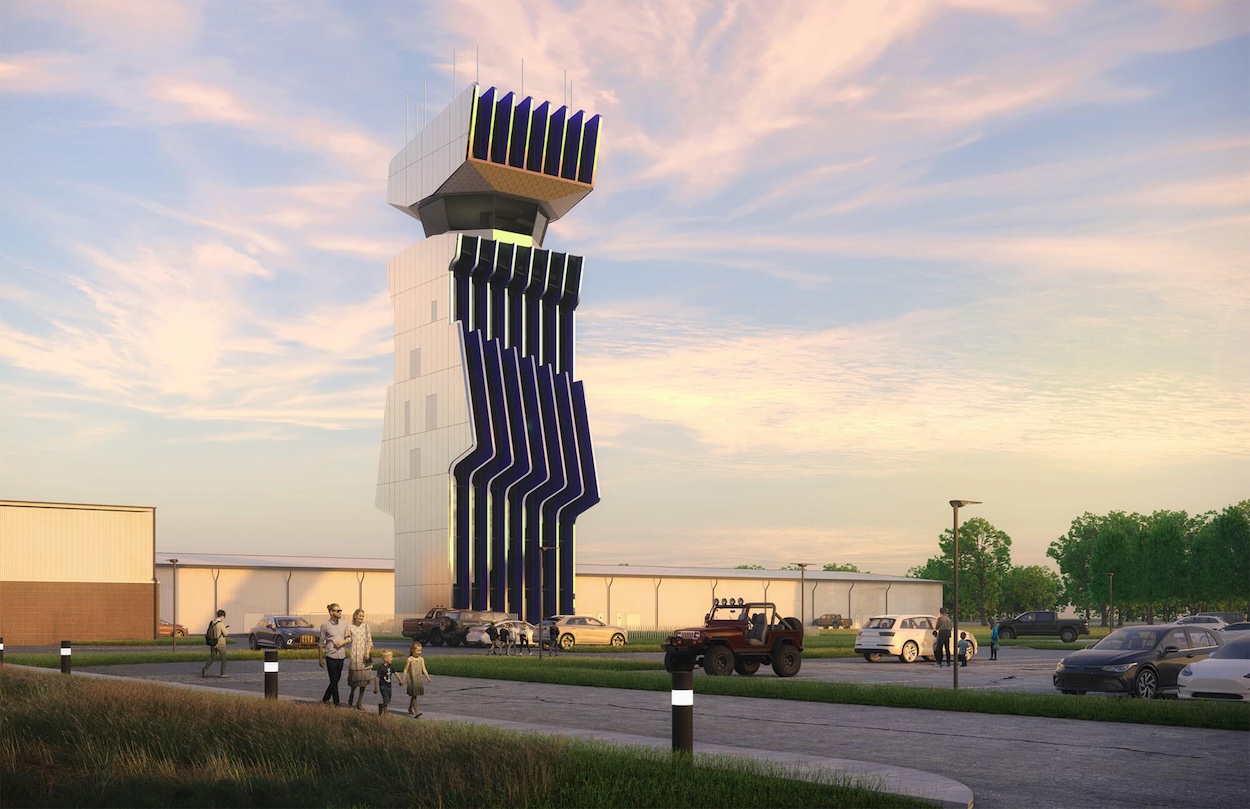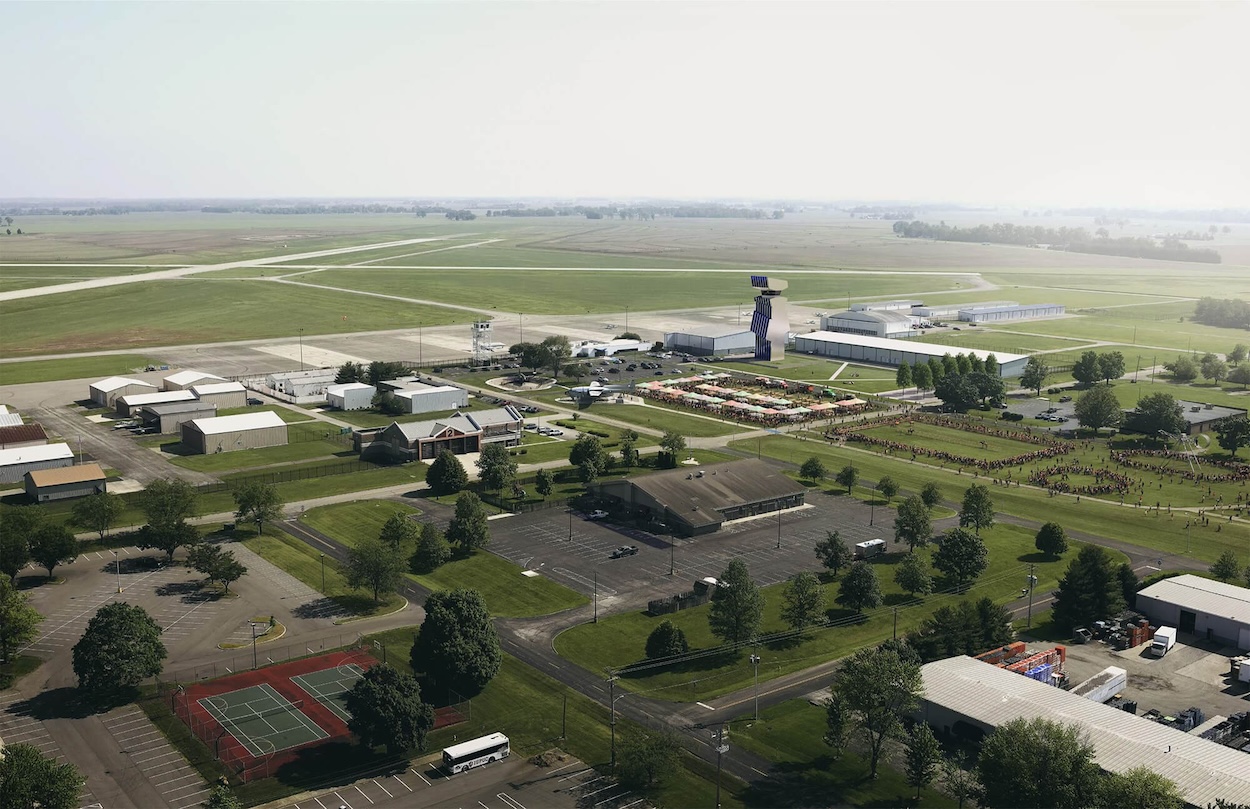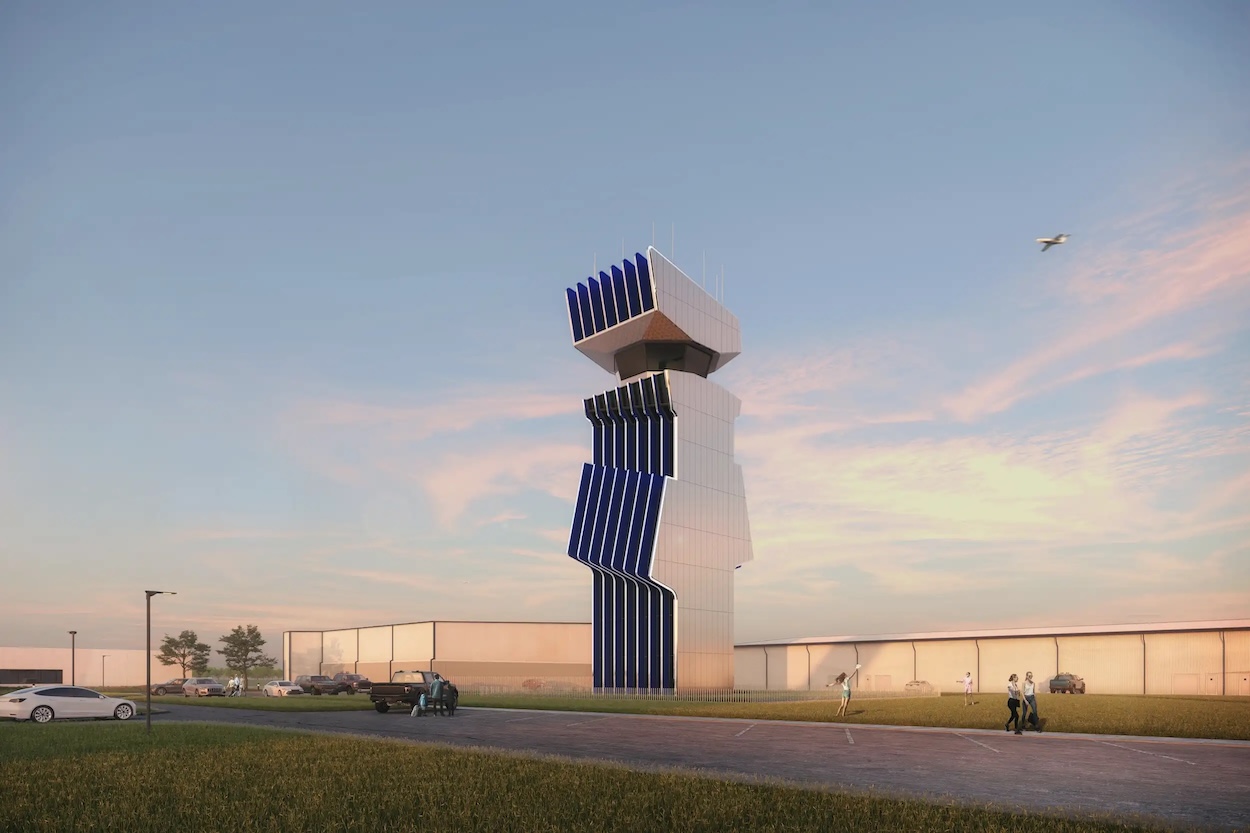Air traffic control towers are typically glimpsed from afar, utilitarian oddities protruding from frenzied terminals and sprawling tarmacs. When designing a replacement for the 80-year-old tower at Indiana’s Columbus Municipal Airport, which operates a flight school and services the town’s international businessmen, Marlon Blackwell Architects sought to defy expectations for how these structures look and feel. As opposed to the slender, needle-like forms with control rooms in a disc-like upper section, the Arkansas firm opted for what one critic described as “a hibernating Transformer that might at any moment convert into a spacecraft.”
Renderings depict a 128-foot-tall steel-and-aluminum tower whose accordion-like profile disrupts the surrounding prairie. Vertical fins rise from the ground up on the tower’s glazed east and west sides, acting as ribs that filter natural light inside. “What emerged from the design process was this idea of a kind of shifting, silhouetted figure,” says Marlon Blackwell, the firm’s founder and a recipient of the Cooper Hewitt’s National Design Award. “The inspiration was aerodynamics but without literally looking like a plane—something that shifted and undulated and spoke to mobility.” Unlike most air traffic control towers, the public will be allowed inside thanks to a designated event space, and it even features an educational room where students can simulate working in one.
Blackwell’s leftfield proposal also befits one of the Midwest’s unlikely modernist hubs. Home to buildings by Eero Saarinen and I.M. Pei (who also knew a thing or two about air traffic control towers), the town’s architectural heritage inspired a 2017 film directed by Kogonada, a citywide festival, and an upcoming book. Thanks to one the country’s most forward-thinking firms, its landscape is about to become even bolder when the project wraps in 2026. “More than a piece of infrastructure,” Blackwell says, “our hope is that the new [tower] will become a beacon of Columbus’s architectural and design heritage, that will mark a key gateway into the city.”



